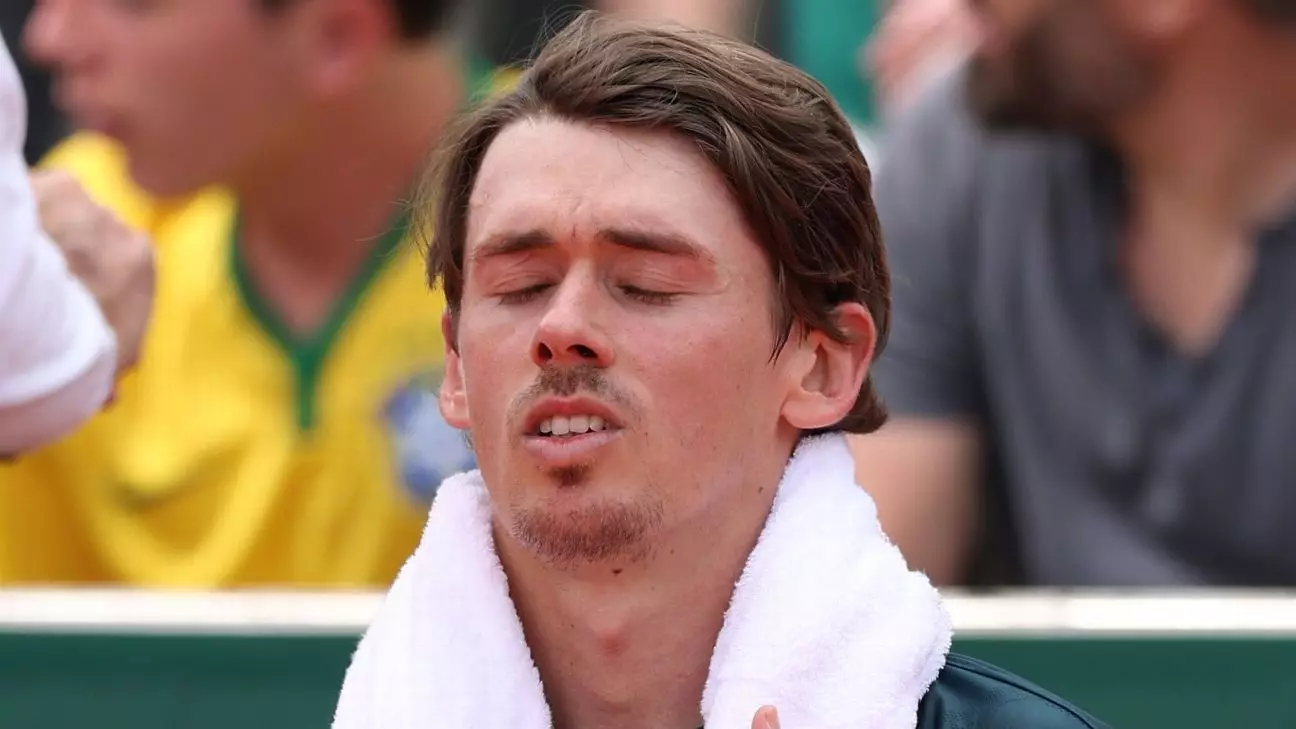In the high-octane world of professional tennis, the physical and mental toll on players is becoming alarmingly evident. Following a disappointing early exit from the French Open, Australian tennis star Alex De Minaur vocalized a sentiment shared by many but often silenced in favor of tradition: the grueling calendar demands a revamp. As he expressed his frustrations after a physically draining second-round match against Alexander Bublik, De Minaur’s concerns spoke to a broader narrative affecting athletes across the sport. The relentless pace of the game is reaching a breaking point, as athletes grapple with the exhaustion of non-stop play and the pressure to perform at their peak. The reality is, without intervention, the bright futures of many talented players are at risk of being cut short.
The Never-Ending Cycle: An Unsustainable Routine
The tennis calendar has become a marathon, not a sprint, and it’s leading players to question the sustainability of their careers. With the season barely pausing for breathing room—only 33 days between the last Davis Cup Finals and the commencement of the United Cup—the transition between competitions appears to be too rapid and unforgiving. De Minaur pointed out a critical flaw in the system: “Once you start, you don’t finish until November 24,” he lamented, a stark reminder of just how demanding the circuit is. Athletes are thrust into rigorous schedules with little regard for physical recovery or mental health.
Many budding stars who initially enter the tennis arena with zeal find themselves worn thin by the relentless grind of tournaments, unable to shake off injuries or fatigue. De Minaur’s appeal for a shorter season is not merely a plea for personal comfort; it’s a wake-up call to the established order within professional tennis.
Pressure to Perform: The High Stakes of Competition
The stakes in professional tennis are soaring, as players not only face physical limitations but also the burden of their rankings. De Minaur isn’t alone in his advocacy for a more forgiving schedule. Notable players like Casper Ruud have echoed similar concerns, describing the ATP’s ranking system as a “rat race.” This metaphor aptly captures the anxiety and urgency athletes feel in their quest for points and prestige, often at the expense of their well-being. Ruud’s candid acknowledgment of competing with injuries like knee pain illustrates a distressing reality: the pressure to participate in mandatory events means risking exacerbation of physical ailments just to maintain standing in a hyper-competitive environment.
The dynamic landscape of tennis necessitates that players constantly chase performance while also navigating the pitfalls of injury and fatigue. The repercussions of skipping mandatory events are severe, with Ruud noting a notable 25% reduction in year-end bonuses for absences. This merciless structure understandably compels players to push their bodies to the limits, resulting in longer-term issues that can curtail careers prematurely.
The Call for Reform: A Collective Responsibility
There’s a growing urgency for stakeholders—be it tournament organizers, governing bodies, or players themselves—to confront these issues head-on. De Minaur’s clarion call for a streamlined tennis calendar is a beginning, but it necessitates collective action to drive change. The sport’s governing bodies need to prioritize the long-term health of athletes over short-term profits, acknowledging that player longevity directly correlates to fan engagement and the sport’s sustainability.
The football community has seen similar discussions around player health and match frequency leading to adjustments in scheduling. Tennis shouldn’t lag behind. A restructured calendar could allow players a chance to recharge physically and mentally, ultimately elevating the quality of the sport being displayed on the court.
Implementing such reforms is not only a moral imperative but a practical one. Balancing the demands of a grueling calendar with the inherent need for player wellbeing will inevitably enhance the sport’s integrity and attractiveness to fans. Change is not merely desirable; it is essential for the future of tennis.

